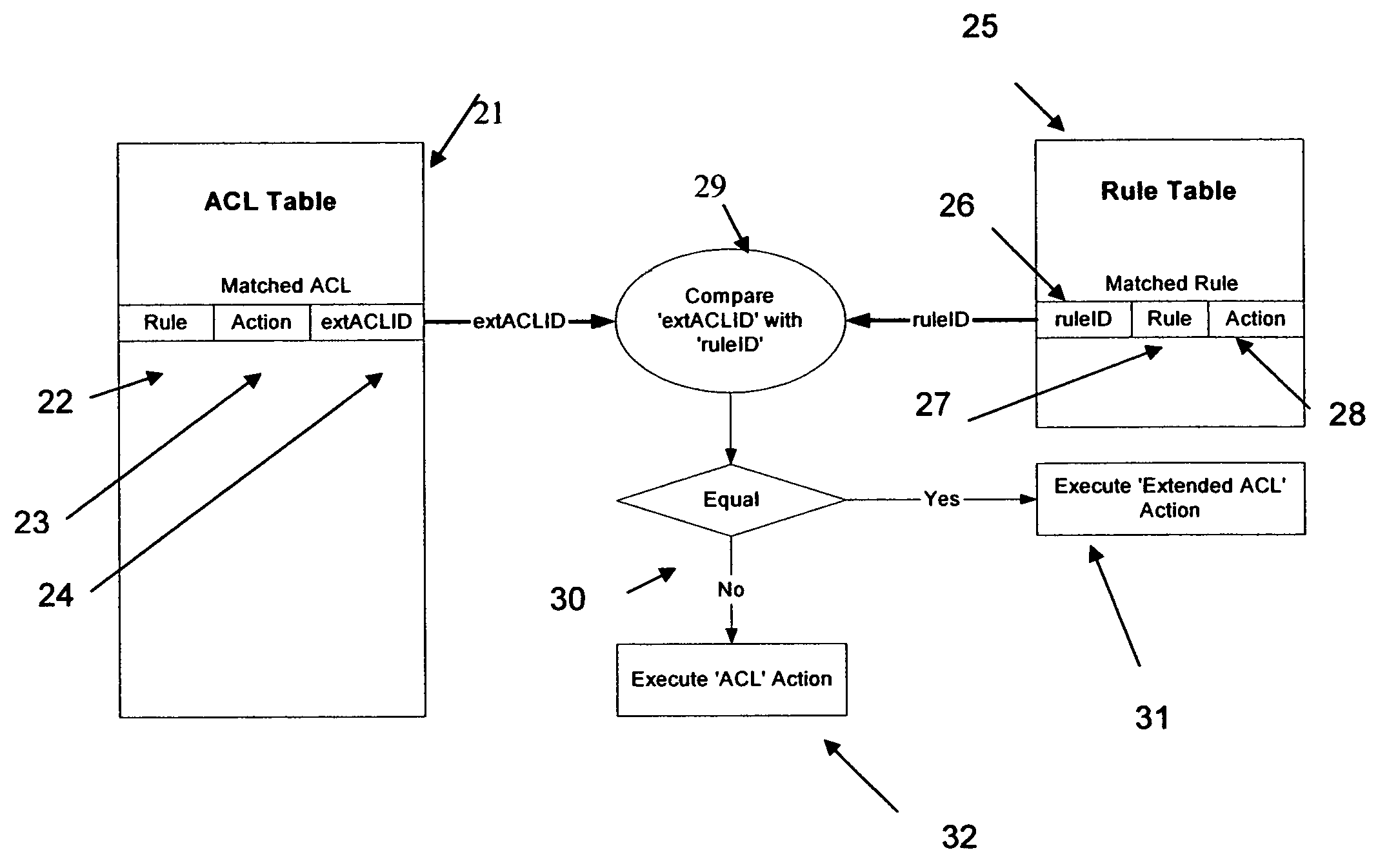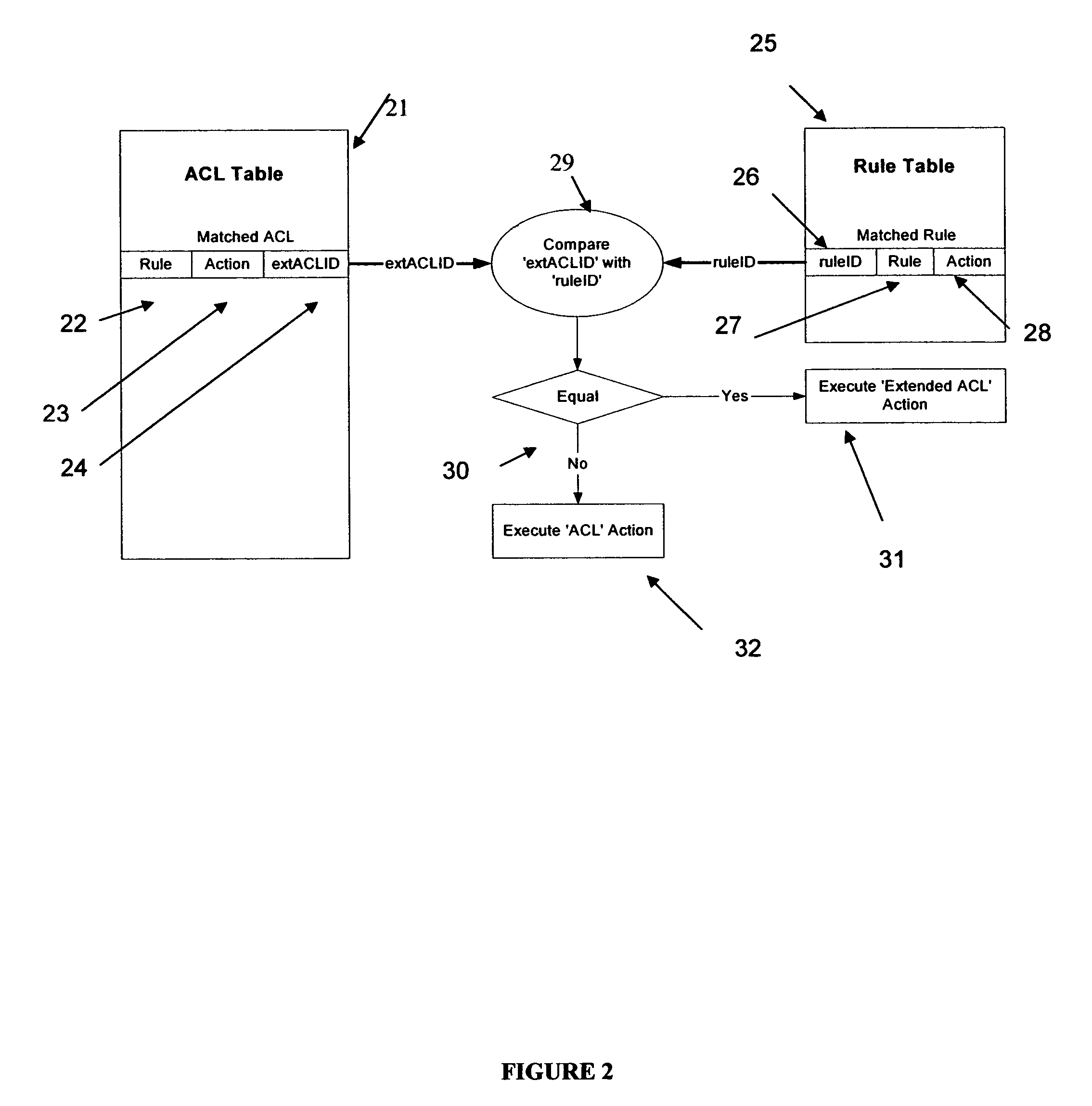Rules engine for access control lists in network units
a network unit and access control technology, applied in the field of packet-based communication networks, can solve the problem of limited memory space on an asic, and achieve the effect of reducing the memory space required for access control lists and making use of access control lists more versatile and efficien
- Summary
- Abstract
- Description
- Claims
- Application Information
AI Technical Summary
Benefits of technology
Problems solved by technology
Method used
Image
Examples
Embodiment Construction
[0014]FIG. 1 of the drawings shows schematically a network unit in which the present invention may be embodied. Only the principal parts of the unit will be described because the invention is not dependent on any particular architecture.
[0015]The unit has a multiplicity of external ports 10 by which the unit can receive addressed data packets and from which addressed data packets can be forwarded. It includes an internal communication system, herein simply represented by a bus 11, by which packets, control signals and commands are conveyed across the unit. The unit includes a main memory 12 which receives packets while they are processed before being forwarded, or in some cases, discarded. When a packet is received, address fields in its header are examined by a lookup engine 13 which determines, with the aid of a lookup or forwarding database (not shown) forwarding data for the packet. As is well known to those skilled in the art, forwarding data for the destination specified in th...
PUM
 Login to View More
Login to View More Abstract
Description
Claims
Application Information
 Login to View More
Login to View More - R&D
- Intellectual Property
- Life Sciences
- Materials
- Tech Scout
- Unparalleled Data Quality
- Higher Quality Content
- 60% Fewer Hallucinations
Browse by: Latest US Patents, China's latest patents, Technical Efficacy Thesaurus, Application Domain, Technology Topic, Popular Technical Reports.
© 2025 PatSnap. All rights reserved.Legal|Privacy policy|Modern Slavery Act Transparency Statement|Sitemap|About US| Contact US: help@patsnap.com



